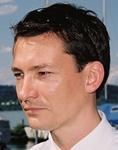On behalf of the entire Organizing Committee, it is our pleasure to welcome you to the 33rd International Conference on Software Engineering. In the crossroads of the Pacific, Hawaii offers an unbeatable combination of surf, sand, sun, and - this week especially - software. Welcome to Waikiki for ICSE 2011!
These are exciting times for software engineering. Virtually every event at ICSE 2011 has seen a record number of submissions. The research/technical track, for example, saw 441 submissions, an all-time record for ICSE. What is even more indicative of the creativity and energy pervading software engineering research is the New Ideas and Emerging Results (NIER) track. In 2010 there were 76 submissions to this track, in 2009 there were 119, but this year there were 198! That's a jump of 66%. While location of the meeting in Hawaii was undoubtedly a special draw, we believe this level of activity shows the continued development of software engineering as a discipline at the forefront of the information technology revolution.
While the quantity of ICSE submissions mentioned above is noteworthy, so is the quality of the program presented. A few numbers illustrate this, comparing the number of submissions to the number of acceptances: Research/Technical Track (441/62, 14%), New Ideas and Emerging Results (198/46, 23%), Software Engineering in Practice (100/18, 18%), and Demonstrations (60/22, 37%). The process followed in each of these tracks was similar, in that a program committee selected for that track reviewed each submission in order to determine acceptances.
In the case of the Research/Technical Track, the 49-member Program Committee was slightly larger than in the past, in anticipation of an increased submission volume, and the software engineering research community did not disappoint! The 441 submissions were reviewed in several phases. Each submission received two reviews in the first phase. Based on the reviews, 169 submissions were selected for the second phase, where each received a third review. The authors of each submission that went through the two review phases then got an opportunity to provide a clarification to the reviews. Based on all of this information, the best-reviewed 112 submissions were selected for discussion at the Program Committee meeting, which took place in Santa Fe, New Mexico on November 12-13, 2010. Over the two days, the Program Committee considered each of the 112 submissions carefully, taking into account the reviewers' assessments and the authors' clarifications, and accepted 62 papers for presentation and publication at ICSE.
The ICSE 2011 theme of Software by Design reflects the widely-held view that the most important ingredient in ensuring a software system's long-term success is its design. While other concepts, concerns, activities, artifacts, and processes are important to the success of a software engineering project, it is the quality of a system's design that provides the critical ingredient. Highlighting design as the conference's theme is meant to focus attention upon design's centrality, to encourage reflection on design experience, to inspire new designers, and to encourage development of new design techniques. The two conference keynote speakers, Kumiyo Nakakoji and Bill Dresselhaus bring special energy and insights into this fundamental aspect of our discipline.
ICSE is a complex event, comprising not only the events listed above, but also a Doctoral Symposium, twenty-two specialized workshops, Technical Briefs, a Festschrift in honor of Professor Leon J. Osterweil, a New Faculty and Researchers Symposium, an ACM Student Research Competition, the SCORE competition, and major co-located events, including CSEE&T, ICSSP, MSR, and SEAMS.
Diagnosing new faults using mutants and prior faults (NIER track)
Literature indicates that 20% of a program's code is responsible for 80% of the faults, and 50-90% of the field failures are rediscoveries of previous faults. Despite this, identification of faulty code can consume 30-40% time of error correction. ...
Empirical results on the study of software vulnerabilities (NIER track)
While the software development community has put a significant effort to capture the artifacts related to a discovered vulnerability in organized repositories, much of this information is not amenable to meaningful analysis and requires a deep and ...
Cited By
Index Terms
- Proceedings of the 33rd International Conference on Software Engineering





